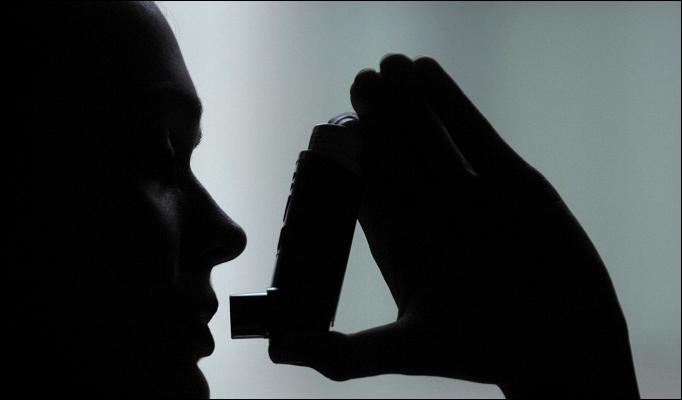Symptoms of Asthma

- Wheezing with a cold (usually also with a fever)
- The majority of colds turn into “chest colds”
- Wheezing while not sick (“out of the blue”)
Wheezing is a squeaking, musical sound produced when breathing out, and it is associated with difficult breathing. Breathing out is more laborious than breathing in, and often there is a “dry”, unrelenting cough with wheezing. The noise, irregular in-and-out breathing, and dry (non-productive) cough are all due to bronchospasm. There is smooth muscle around the branches of the bronchi that is responsive to both the direct effect of inflammation from allergens or infectious agents and the nerve supply. Under the control of nerves from the sympathetic (autonomic) nervous system, the ring-like muscles can either contract to constrict the bronchus or relax to relieve the constriction. When constricted, air movement is difficult. On inspiration, the diaphragm creates a vacuum in the chest cavity that, if strong enough, allows air to flow in even when there is partial obstruction. Expiration is a more passive event. The diaphragm “pulls” but has little “push”. With severe restriction, the muscles of the rib cage are brought into play to try to squeeze air out of the lungs – a very inefficient and exhausting help. This creates the jerky respiratory pattern of inspiration being faster than expiration. Bronchial constriction makes it difficult for bronchial secretions to be coughed up, leading to the ineffectual dry cough. As liquids are absorbed from the secretions, they become sticky with almost the consistency of glue.
No doctor or parent is anything other than uncomfortable when observing an infant or child having trouble with breathing. Nasal allergy may seem like just an annoying problem, but wheezing needs immediate attention. We are using the term asthma here for simplification. One is not said to have asthma unless there is some sense of chronicity to periods of bronchoconstriction and respiratory distress. Asthma may be due to a number of factors: allergies, exercise, irritants in the air, infectious causes of inflammation, or there may be an emotional, stressful component.
Wheezing in an infant or toddler poses a problem I diagnosis – namely, separating allergy from a viral infection. Every year, we have a round of respiratory syncytial virus (RSV), which presents as a flu-like illness with sinusitis in older children and adults (sometimes accompanied by a bloody nasal discharge and “raw”, burning nose and sinus membranes) that is dismissed as “just another bad bug”. Once had, partial immunity is afforded for the next year. Unfortunately, a newborn caught in an epidemic, with first-time exposure, can get seriously ill from bronchiolitis, inflammation of the small branches of the bronchial tree in which there are no muscles around them that might respond to bronchodilating medicines. RSV infection seems to make these infants prone in subsequent seasons to other virus-induced wheezing.
There are many viral infections that play a part in bronchoconstriction in susceptible individuals. This type of asthma can usually be managed well with a medicine to relieve (dilate) the constricted bronchi. An infant or child with the appearance of asthma who is having real trouble breathing needs immediate medical attention, both for accurate diagnosis and treatment. Detective work to identify all possible “triggers” is the first, essential step.
Determine what is the most appropriate type of bronchodilator to have on hand. An older child may be able to handle an inhaler, whereas a younger one would need a liquid, oral preparation. Any of these medicines are most effective when used early on, as soon as the first signs of “tight”, dry cough or other difficulty with air exchange. Finding a dose that is effective without causing jitteriness (one of the main side effects) is reassuring to the patient, the parent, and the doctor. Soothing the uneasiness produced by finding it hard to get a breath as well as that form the anxiety-like effects of the medicine itself requires a calm, reassuring atmosphere. When the child is well is a good time to think about how one stays as calm as possible during an attack. Having success with nipping an attack in the bud is very reassuring. If an attack progresses to the point of real difficulty breathing, massaging the back muscles help, as well as knowing that help is near if relief doesn’t come soon.

